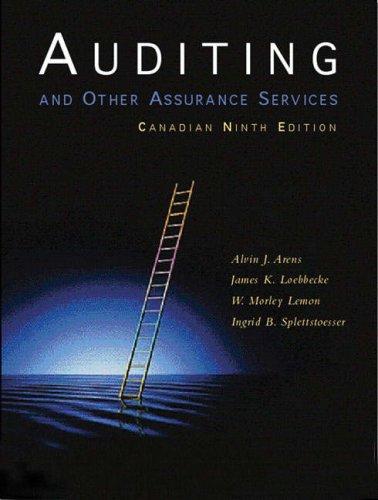In confirming accounts receivable on December 31, 2001, the auditor found 15 discrepancies between the cus tomer
Question:
In confirming accounts receivable on December 31, 2001, the auditor found 15 discrepancies between the cus¬ tomer s records and the recorded amounts in the subsidiary ledger. A copy of all confirmations that had exceptions was turned over to the company controller to investigate the rea¬ son for the difference. He, in turn, had the bookkeeper per¬
form the analysis. The bookkeeper analyzed each exception, determined its cause, and prepared an elaborate working paper explaining each difference. Most of the differences in the bookkeeper's report indicated that the errors were caused by timing differences in the client's arid customer's records. The auditor reviewed the working paper and con¬ cluded that there were no material exceptions in accounts receivable.
Two years subsequent to the audit, it was determined that the bookkeeper had stolen thousands of dollars in the previ¬ ous three years by taking cash and overstating accounts receivable. In a lawsuit by the client against the public accountant, an examination of the auditor's December 31, 2001, accounts receivable working papers, which were sub¬ poenaed by the court, indicated that one of the explanations in the bookkeeper's analysis of the exceptions was fictitious. The analysis stated the error was caused by a sales allowance granted to the customer for defective merchandise the day before the end of the year. The difference was actually caused by the bookkeeper's theft.
Required
a. What are the legal issues involved in this situation? What should the auditor use as a defence in the event that she is sued?
b. What was the public accountant's deficiency in conduct¬ ing the audit of accounts receivable?
Step by Step Answer:

Auditing And Other Assurance Services
ISBN: 9780130091246
9th Canadian Edition
Authors: Alvin Arens, James Loebbecke, W Lemon, Ingrid Splettstoesser





